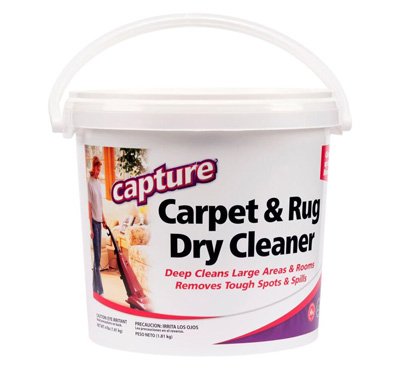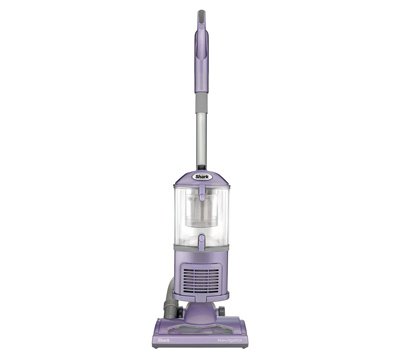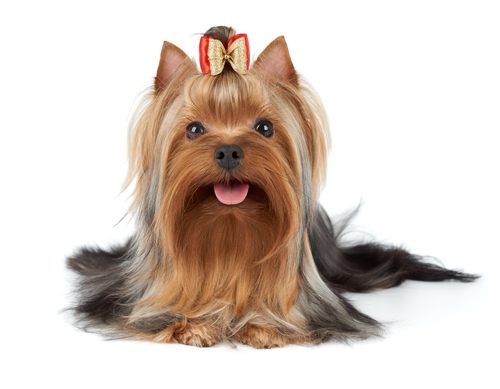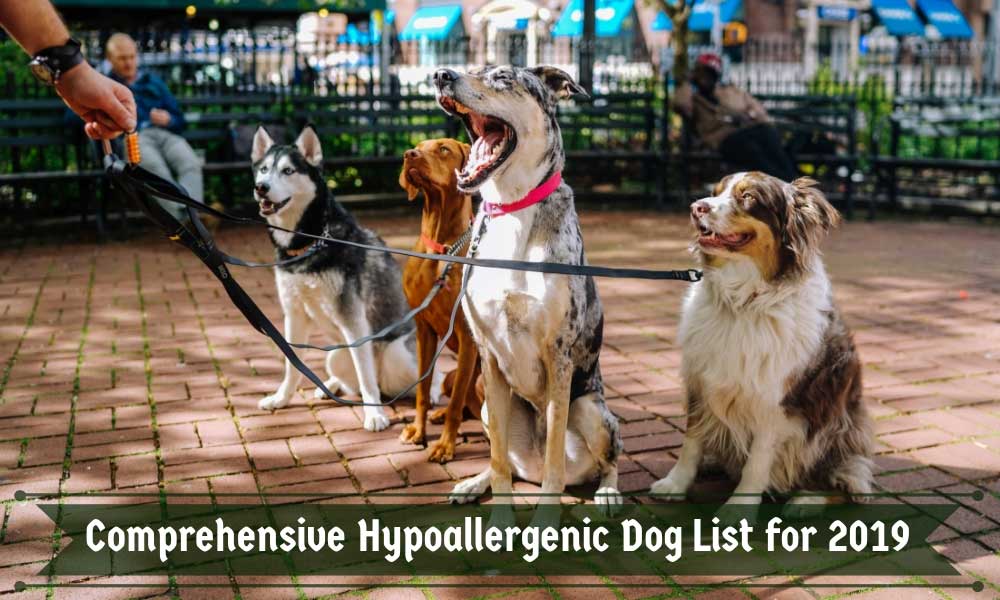
Are you a dog lover but suffer from a dog allergy? You are not alone. An estimated 10% of people suffer from pet allergies.
Luckily for the dog lover in you, there are several dogs that are more than suitable for someone with a pet allergy. These dogs are hypoallergenic — meaning that they produce less of the tufts of hair and dander that elicit an allergic reaction. In practical terms, hypoallergenic dog are dogs that shed less. Less pet hair and dander mean fewer allergic reactions!
Even better, the variety of hypoallergenic dogs is diverse, ranging from big to small, from relaxed and calm to bold and energetic, so there is an option for any kind of dog lover.
Contents
What Does “Hypoallergenic” Mean?
First, let’s get a bit clear on the terminology here. Many people talk about hypoallergenic dog breeds as if being hypoallergenic is a special property of certain breeds of dogs. The reality is that it is individual dogs that are more or less hypoallergenic. Some breeds tend to have more hypoallergenic qualities due to differences in how those breeds produce saliva and shed hair, the things that contain the specific proteins that trigger an allergic reaction.
Specifically, hypoallergenic dogs are usually from breeds that typically shed less and produce less saliva. No one particular breed of dog is completely incapable of producing an allergic response; there is just too much variability within specific dog breeds to make that claim. Even if you had a hairless dog, it would still produce the proteins that could trigger a reaction. As a general rule of thumb, the possibility of an allergic reaction varies with the individual person and the individual dog.
So, throughout this article, keep in mind that you can reduce the possibility of an allergic reaction to most dogs by regularly brushing their coats to remove excess hair and regular bathing. Keeping a clean house, vacuuming pet hair, and dusting pet dander will also reduce the possibility of an allergic reaction. We will be specifically talking about breeds of dogs that are more likely to be better for someone with pet allergies.
West Highland White Terrier
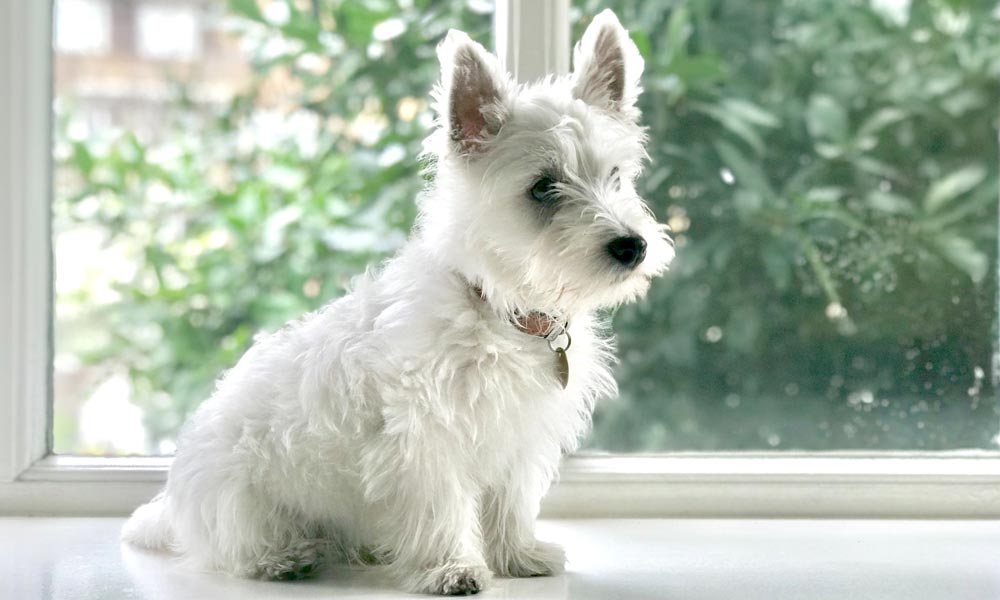
Smart, adorable, and with a charming personality to boot, the West Highland White Terrier (Westie for short) is one of the most popular small terriers. Westies stand about 10 to 11 inches at the shoulder and are tough and boisterous for their diminutive size. They were originally bred to hunt rats and other rodents, so they have the spirit of a fighter in a little package. Despite their active nature, they are very intelligent and easy to train. Best of all, due to their size, they produce little hair and tend to only shed when brushed or bathed.
- + Small sturdy and tough
- + Independent and easy to take care of
- + Easy to train
- – Can be territorial
- – Like to bark at and chase moving things
Schnauzer (Mini or Standard)
This German dog is known for its distinctive nose shape, as is apparent in the name “Schnauzer” which comes from the German word for “snout” or “mustache.”
And indeed, what a mustache these dogs have, with the dignified appearance of a certain fictional British detective. Schnauzers are known for being smart and athletic. They make equally good watch dogs as backyard squirrel chasers, and they get along extremely well with children. They are energetic, so they require a firm hand to train properly, but adult trained schnauzers are very stoic and disciplined. The topcoat of schnauzers is very wiry and its undercoat catches most of the loose hair, so they tend to shed very little.
- + Wiry coat sheds very little
- + Protective and loyal
- + Good with children
- – Energetic and hard to train
- – Can be stubborn
Labradoodle
With the intelligence of a poodle and the good nature of a lab, Labradoodles are very popular as guide dogs and are known for their wiry coats that shed very little. Their coat is fairly dense, so they are best suited to colder regions. They are very playful and need frequent exercise. They show a high affinity for water and are good swimmers, a trait inherited from the parent breeds. Since they are hybrid dogs, Labradoodles have a slightly higher frequency of congenital issues like hip dysplasia and eye disorders.
- + Very smart and good-natured
- + Good companions and good service dogs
- + Adapt well to living in homes
- – Require lots of exercise
Bichon Frise

The Bichon Frise (pronounced BEE-shawn FREE-say) is well known for its white fluffy cotton ball-like appearance. Its affable looks are matched by its friendly nature and contrasted with courage and grit. Bichon Frises are very curious and enthusiastic, so they get along well with strangers and make good city dogs. They enjoy performing tricks for treats and train easily but do not respond well to negative reinforcement. They are energetic, and their size makes them great for playing with children. Due to their history as shipping dogs, they have a natural affinity for water and like swimming. Their coat can get tangled and requires frequent brushing. Matted clumps of unbrushed hair can cause bruising on the skin if not taken care of.
- + Sociable and curious
- + Small and easy to take care, of; good for cities
- + Affectionate
- – Does not shed much but does need to be brushed
- – Can be somewhat territorial
Portuguese Water Dog
This medium-sized breed ball of fur may be recognizable to some due to “First Dogs” Sunny & Bo Obama being in the spotlight. The Portuguese Water Dog is super smart, disciplined, and easy to train. This breed of working dog come from Portugal whose Portuguese name literally translates to “dog of water.” They were originally bred to herd fish into a fisherman’s net and to retrieve lost tackle and bait. This working sense is retained in the species so you might find them from time to time trying to herd you around the kitchen or back yard. Their non-shedding coat makes them a popular hypoallergenic choice among dog enthusiasts.
Maltese
The Maltese is a small breed of dog originating from the Mediterranean island nation Malta. Other names include the “Maltese terrier,” “Roman Ladies Dog,” and “Cokie.” Maltese dogs are often mistaken for Bichon Frises due to their similar size and coloring, though the Maltese tend to have more wispy hairs than the curly-haired Bichon Frise. Maltese make good companion dogs and are easy to domesticate. They can be a bit snappy so should be supervised when with small children. Socializing them well reduces this habit. They are known for barking quite a bit so require frequent stimulation to keep them from getting bored.
- + Small and easy to domesticate
- + Live well in smaller spaces
- + Make good companion dogs
- – Can be a bit snippy
- – Vocal
Afghan Hound
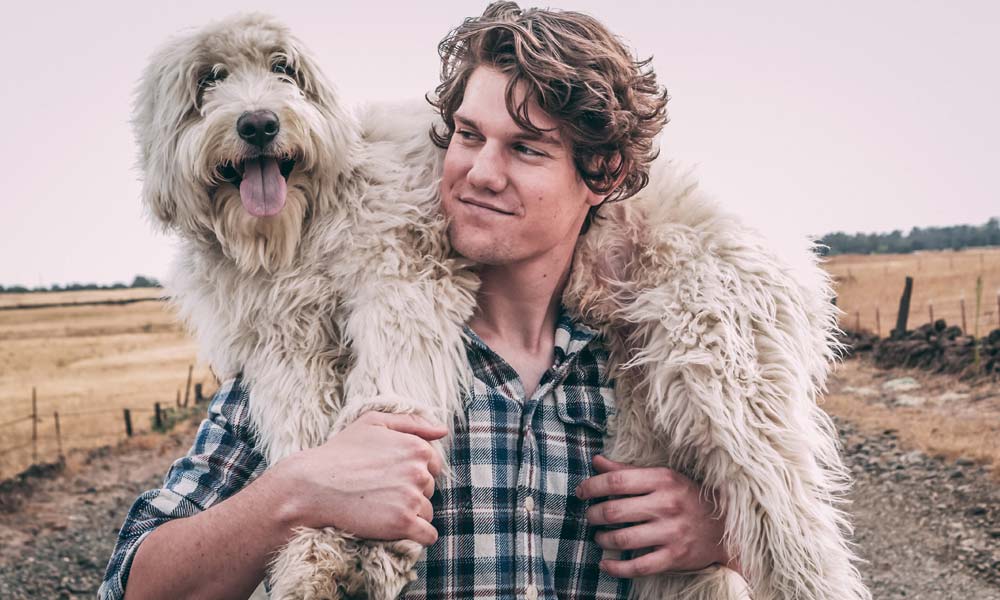
The Afghan hound is known for its elegant silky coat and lanky appearance. This eye-catching breed is bred for the mountains of Afghanistan and sports long fine hairs with a regal appearance. The flowing coat hides its powerful frame. This 27-inch tall dog is an agile dog and can run very fast. They have an aloof demeanor but become very playful and goofy with people they are familiar with. At first, they might appear standoffish, but they warm up over time. It has a high prey drive so it may not get along well with other smaller animals. They are among the more difficult breeds of dogs to train, so they are not recommended for new owners. Their long coats require routine brushing to prevent matting and tangles.
- + Docile and calm
- + Long coat does not shed frequently
- + Elegant and regal appearance
- – Low obedience intelligence
- – Temperamental with small animals
Chinese Crested Dog
The Chinese Crested Dog is a hairless breed of dog that, despite the name, actually is believed to originate from Africa. Chinese crested dogs were used by Chinese sailors on ships and were bred to be hairless so they could handle the water well. Their hairless body and silky ear hairs make them good for people with pet allergies as they produce minimal shedding and pet dander. Their history as shipping dogs makes them very alert and good watchdogs. They are very playful and develop powerful attachments to their owner. The lack of hair also means they produce less body odor than other breeds.
- + Minimal hair means virtually no shedding
- + Adapt well to rural and urban living spaces
- + Relaxed and low energy
- – Prone to developing eye conditions
- – Known to have allergies
Basenji
This African breed of hunting dog is known for its unique yodel-like sound it produces with its unique larynx. It is sometimes called the “barkless dog” for this reason. Basenjis have short, wiry hairs and an undercoat that catches stray falling hairs, so they produce little dander. They have a strong upright gait and powerful legs so they can run rather quickly. They are very energetic, curious, and reserved with strangers. They get very attached to their owners and like to stay by their side throughout the day. Basenjis also have the unique behavior of standing on their hind legs when curious and observing something. They do not appreciate water and may not get along well with small household pets.
- + Short, wiry coat sheds little
- + Reserved around strangers and gentle
- + Long-lived
- – Tend to develop kidney problems in old age
- – May be aggressive with smaller pets
American Hairless Terrier
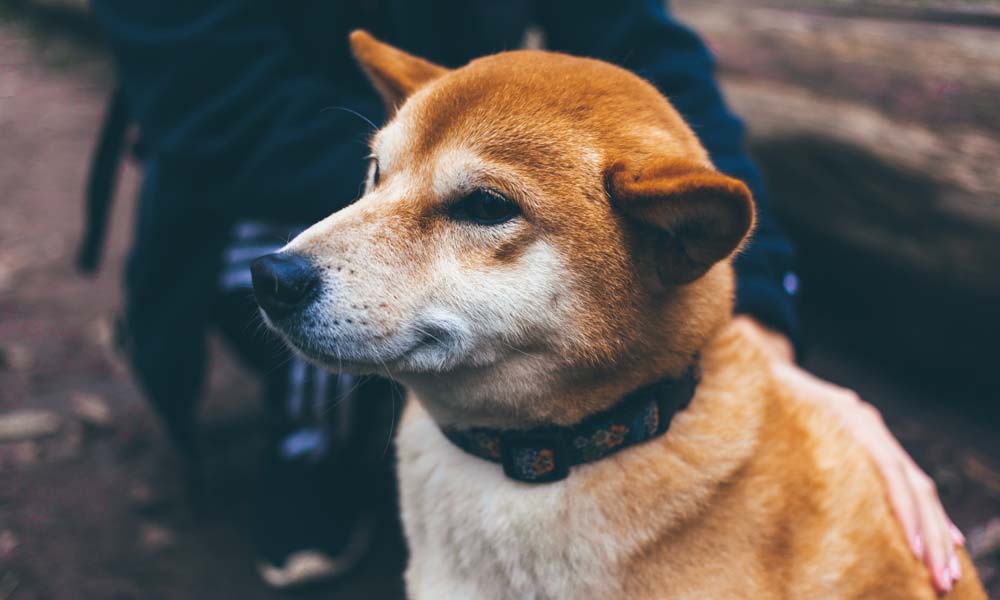
This intelligent and social working breed of dog is hairless and thus makes a good choice for pet owners who suffer from allergies. The American Hairless Terrier is a relatively new breed of dog that first originated in Louisiana in the 1970s. Like many terrier breeds, the American Hairless is tough and gritty. It was bred to be a tracking dog and likes to dig holes and chase game. Its lack of hair does make it vulnerable to scratching and sun damage and it is not a very strong swimmer, so keep it away from water. They are very intelligent but can be a chore to train due to their high energy levels.
- + Hairless breed so no shedding and minimal dander
- + Intelligent and alert; make good watchdogs
- + Adapt well to urban and rural living spaces
- – Vulnerable to sun damage
- – High prey drive makes them temperamental around small pets
Tips to Reduce Pet Allergies
As stated previously, no dog is completely incapable of causing an allergic reaction. There are steps you can take to reduce the risk of an allergic attack, however.
- Keep your bedroom pet free. Pet dander and hair can easily get trapped in your bedsheets, making sleeping uncomfortable.
- Vacuum frequently. Pet hair has a tendency to bunch and stick to floorboards. This goes double if you have carpeted surfaces. Frequent vacuuming should free up loose hair.
- Dust all surfaces pets come into contact with. Pets leave behind dander, which contains the proteins that cause allergic reactions.
- Wash your hands after handling your dog. Even brief contact leaves dander and hair. Make sure to wash your face frequently as well.
- Consider allergy shots. Allergy shots work like a vaccine against allergies, but they must be taken frequently and regularly to be effective.
Useful Products For Cleaning Pet Allergens
Allersearch ADMS AntiAllergen Spray: Inorganic spray that oxidizes and destroys allergens from pet dander and hair. It is safe on colors and contains non-toxic ingredients
Capture Carpet Dry Cleaner Powder: Once every 8-week carpet treatments keep allergens from growing and removes stains from pets. Works on all kinds of fabrics and furniture
Shark Navigator Upright Vaccum: This vacuum is designed specifically for trapping and removing allergens from pet dander and hair. An extra attachment is meant for cleaning furniture and its light and portable at only 12.5 pounds.
Conclusion
Fortunately for dog lovers, having dog allergies does not mean you have to forgo having a lovable pup. Hypoallergenic dog breeds are great for people with pet allergies and make some of the best companions. Through a combination of picking the right dog and diligent cleaning, you can greatly reduce the risk of an allergic reaction and make owning a dog the enjoyable experience it should be.
I grew up in a household that was filled with animals. I believe that my fate as a dog-loving person was sealed in early childhood since my parents owned several dogs of varying sizes and breeds. There was no choice but to take care of and learn about dog habits and the best animal care practices — otherwise, I’d be clueless about how to go about the creatures I was surrounded by day and night.
As a life-long puppy lover, I know a thing or two about dogs and how to go about caring for them in the best way possible. Although I’m not a professionally trained dog behaviorist, trainer, or veterinarian, all of my knowledge and experience with canines comes from a place of love and a deep-rooted passion for dogs and animals in general.
Seeing as dogs kept me company throughout every stage of my life, I decided to follow a different path in my academic life and obtained a Bachelor’s and Master’s degrees in Marketing Management and Digital Advertising, which ultimately allowed me to combine my professional training and personal experience by creating the ultimate dog lover’s resource website! Along with my husband, Dave, I run MySweetPuppy for like-minded dog lovers who want to have a single, clear, and reliable information source about anything and everything related to dogs and their well-being.


